by Christine Pesta
No matter whether you are a meat eater, vegetarian, pescatarian, or vegan, you are going to need a bit of fiber in your diet. In fact, the further you stray from a vegan diet, the more you’re going to need to increase your fiber intake.
That is not to say that vegans don’t have to worry about their intake of fiber. They too must make sure that they incorporate enough fiber into their meals. However, most, by the very nature of their eating habits do just that.
But in what way, may you ask, does fiber benefit us? Where are the best places to find it? How can you incorporate more of it into your diet?
Well, to start, you’ll need to know the difference between soluble fiber and insoluble fiber:
Soluble fiber reduces the level of bad cholesterol in the body by absorbing water which in turn decreases the amount of cholesterol and fat absorbed. It is also quite a boon to those suffering from Type II Diabetes, as it regulates blood sugar which lowers insulin resistance by slowing digestion.
Insoluble fiber is what your mother may have called, “roughage”. It increases the bulk in your stool, and helps food to pass through your gut faster, as it is not exactly “digestible”.
Supplemental fiber is fiber taken from natural sources and reintroduced into food or sold as a supplement to your meals. They are primarily made of soluble fiber, and some may contain other additives.

Examples of foods that contain soluble fiber include: oats, prunes, apples, beans, figs, and sweet potatoes.
Some foods that contain insoluble fiber are: nuts and seeds, peas, wheat bran, beans, celery, and grapes.
When eating a diet high in fiber, you will want to make sure that you are also drinking plenty of water, in order to avoid constipation, abdominal discomfort, gas, and bloating. If you don’t include enough fiber in your diet, you will increase your risk of developing high blood pressure, high cholesterol, blood sugar instability, as well as constipation or loose stools.

Some great ways to make sure you are getting enough fiber in your diet is by incorporating it into every meal. For instance, try oatmeal topped with blueberries for breakfast; both are high in fiber and make a great combination. For lunch, perhaps a bean burrito, bean soup, or a salad that includes a helping of beans, avocado, or corn. Dinner can include foods such as cauliflower, artichokes, chickpeas, brown rice, or quinoa.
Fresh fruit such as strawberries, pears, or blueberries, and nuts and seeds like walnuts, pumpkin seeds, or almonds, are also a good choice for a dessert or snack.
There are endless ways to make sure you are getting enough fiber in your diet, without having to eat certain foods you may not care for, as there are plenty of high-fiber foods to choose from.
Be sure to have at least one serving of a high-fiber food at every meal and you may soon notice a difference in your energy level and overall health!










